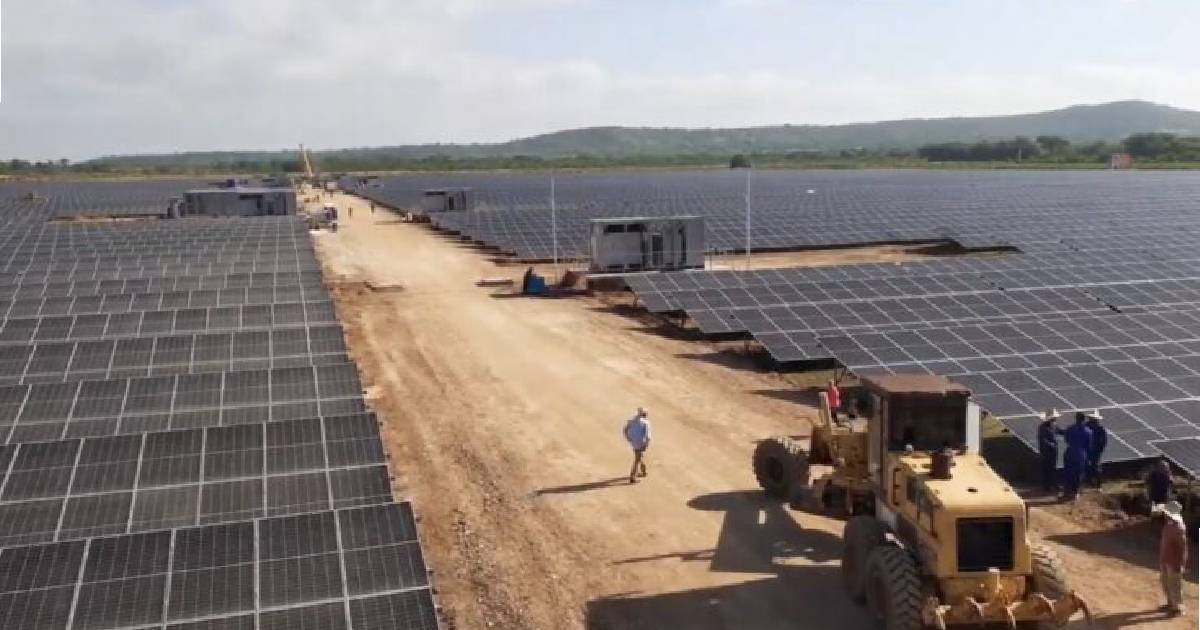This Tuesday marked the inauguration of the Las Guásimas photovoltaic solar park in Contramaestre, Santiago de Cuba, by the Cuban government. With an installed capacity of 21.8 megawatts (MW), it is the first solar park in the region to be connected to the National Electric System (SEN). Official estimates suggest that this facility could save the country approximately $4.9 million annually, based on current oil prices. Authorities also highlighted its potential to cut down on greenhouse gas emissions and promote the transition to renewable energy sources.
The solar park was synchronized with the SEN on April 30 and is the first of four planned for the province. Additional projects are underway in Rafael Reyes and Villa Victoria, both in San Luis, and Anacaguita, also in Contramaestre, as reported by the official newspaper, Sierra Maestra. While the report did not disclose the investment costs or the projected payback period, it did note that the inauguration was attended by Vice Prime Minister Ramiro Valdés Menéndez, who emphasized the importance of maintaining the equipment and advancing professional skills.
In line with the usual official ceremonies, the event featured the traditional ribbon-cutting, the distribution of Communist Party membership cards to "outstanding" workers, and accolades for the Santiago de Cuba Electric Company and 27 other entities involved in the project, including some from the private sector. The ceremony was characterized by a triumphalist tone that overshadowed technical explanations and an honest acknowledgment of the ongoing energy crisis that far exceeds any symbolic gesture.
The debut of the Contramaestre solar park adds to the rollout of similar facilities in other provinces over recent months. This comes amid a national context of aging thermoelectric plants, deferred maintenance, and fuel shortages, where renewable energy represents about 5% of the country's energy matrix.
However, these new installations face a significant challenge: the absence of batteries to store the generated electricity. This means solar energy can only be used in real time during daylight hours, with no capability to meet nighttime demand, when consumption peaks.
The nation is currently grappling with a severe energy crisis, characterized by relentless power outages that leave citizens enduring daily blackouts lasting over 20 hours. As of Tuesday, the energy deficit stands at over 1,700 MW, exacerbated by the unexpected shutdown of Unit 3 of the Cienfuegos Thermoelectric Power Plant, coupled with the planned disconnection of the Antonio Guiteras Thermoelectric Plant in Matanzas, which has pushed figures beyond projections and led to a more severe collapse of the SEN.
President Miguel Díaz-Canel has pledged improvements with the installation of these systems, which are expected to generate more than 500 MW of solar energy in the first half of this year. Moreover, he assured that by the end of 2025, 55 solar parks with a capacity of 1,200 MW will be constructed. Authorities have reiterated the goal of achieving 2,000 MW of photovoltaic generation by 2030.
Understanding Cuba's Solar Energy Initiatives
How much energy will the Las Guásimas solar park generate?
The Las Guásimas solar park has an installed capacity of 21.8 megawatts (MW).
What savings are expected from the Las Guásimas solar park?
The solar park is expected to save approximately $4.9 million annually, based on current oil prices.
What are the limitations of the new solar parks in Cuba?
A significant limitation is the lack of batteries to store generated electricity, meaning solar energy can only be used during daylight hours.
